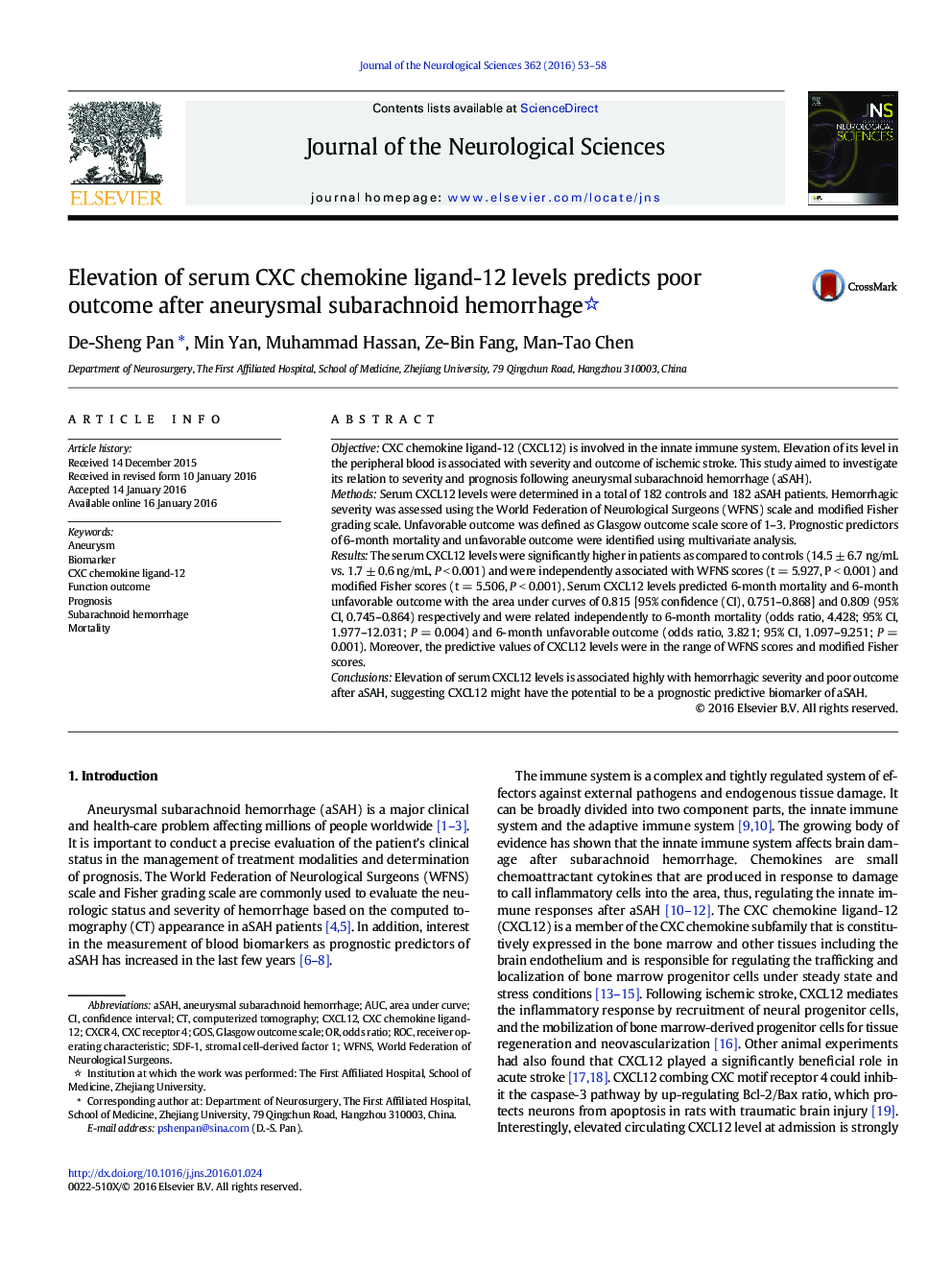| کد مقاله | کد نشریه | سال انتشار | مقاله انگلیسی | نسخه تمام متن |
|---|---|---|---|---|
| 1913041 | 1535100 | 2016 | 6 صفحه PDF | دانلود رایگان |
• Serum CXCL12 levels are enhanced after aSAH.
• Serum CXCL12 levels are related to hemorrhagic severity.
• CXCL12 is an independent prognostic predictor.
• CXCL12 has high prognostic predictive performance.
ObjectiveCXC chemokine ligand-12 (CXCL12) is involved in the innate immune system. Elevation of its level in the peripheral blood is associated with severity and outcome of ischemic stroke. This study aimed to investigate its relation to severity and prognosis following aneurysmal subarachnoid hemorrhage (aSAH).MethodsSerum CXCL12 levels were determined in a total of 182 controls and 182 aSAH patients. Hemorrhagic severity was assessed using the World Federation of Neurological Surgeons (WFNS) scale and modified Fisher grading scale. Unfavorable outcome was defined as Glasgow outcome scale score of 1–3. Prognostic predictors of 6-month mortality and unfavorable outcome were identified using multivariate analysis.ResultsThe serum CXCL12 levels were significantly higher in patients as compared to controls (14.5 ± 6.7 ng/mL vs. 1.7 ± 0.6 ng/mL, P < 0.001) and were independently associated with WFNS scores (t = 5.927, P < 0.001) and modified Fisher scores (t = 5.506, P < 0.001). Serum CXCL12 levels predicted 6-month mortality and 6-month unfavorable outcome with the area under curves of 0.815 [95% confidence (CI), 0.751–0.868] and 0.809 (95% CI, 0.745–0.864) respectively and were related independently to 6-month mortality (odds ratio, 4.428; 95% CI, 1.977–12.031; P = 0.004) and 6-month unfavorable outcome (odds ratio, 3.821; 95% CI, 1.097–9.251; P = 0.001). Moreover, the predictive values of CXCL12 levels were in the range of WFNS scores and modified Fisher scores.ConclusionsElevation of serum CXCL12 levels is associated highly with hemorrhagic severity and poor outcome after aSAH, suggesting CXCL12 might have the potential to be a prognostic predictive biomarker of aSAH.
Journal: Journal of the Neurological Sciences - Volume 362, 15 March 2016, Pages 53–58
